Increasingly, in domestic gardens you can find vegetables unusual for a simple layman. It is hard to believe that they all belong to the pumpkin family, and, despite the extraordinary data, it is customary to correlate them with an ordinary cucumber. The exotic relatives of Zelentsy - melotria, momordica, trihozant, lemon cucumber and others - take their place of honor in their summer cottage.
Content
Armenian cucumbers
A very rare guest in our area is the Armenian cucumber. The second name of this unusual-looking vegetable is serpentine melon. The characteristics of the Armenian cucumber, which is similar to the usual cucumber only in name, are striking. Firstly, the smell - it is not a refreshing cucumber, but melon. Secondly, the shape - narrow cylindrical fruits are stretched to 50 centimeters, and the ends are slightly bent by a crescent. Thirdly, the consistency - the skin of the cucumber is soft, strongly ribbed, light green, whitish in color. The pulp is juicy, friable, sweet.
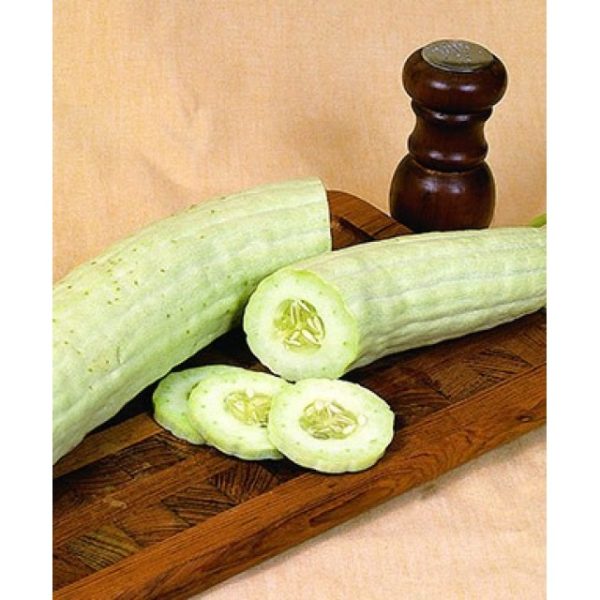
There are several varieties of Armenian cucumbers. Popular among them:
- The hero is white.
- The melon is silver.
- Melon Flekhuozus.
The birthplace of this variety of the well-known vegetable is Asia. But despite the southern roots, cucumbers are well adapted to a more severe climate. They are excellent, and most importantly they vegetate for a long time both in the open ground and in the greenhouse space. Tall plants (the length of the vine often reaches four meters) are not afraid of low temperatures, resistant to many viral diseases.
Chinese cucumber
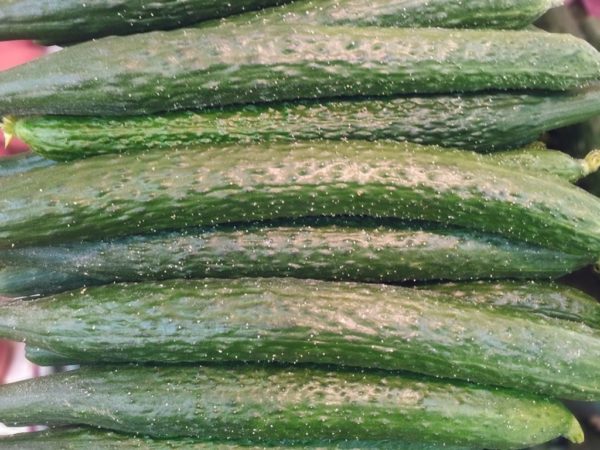
Such an unusual cucumber comes from China. Of all the unusual varieties, the Chinese cucumber is most similar to the vegetable familiar to our eye. The fruits have a dark green glossy color, they are narrow and long (40-50 centimeters), with a traditionally cucumber taste and a watermelon finish.
Chinese cucumbers amaze with their versatility and unpretentiousness. Indeterminate plants take root very well in almost all climatic conditions, bear fruit wildly and almost never get fungal diseases. Productivity is more than 10 kilograms from one bush.
Among the many varieties of Chinese vegetables, most often in the gardens you can find:
- Chinese snakes.
- Chinese miracle.
- Chinese white.
- Chinese long-fruited.
- Chinese Farm F1.
- Chinese disease resistant.
In addition to the many advantages, Chinese cucumbers are not without drawbacks. So, for example, gardeners note the fact that they are very little stored. After a day, the fruits dry and wither, become tasteless and cease to be usable. In addition, it is difficult to grow viable seedlings, since seed germination is weak. It is difficult to care for the vine itself, whose height reaches four meters - so that the stems do not break off, the bushes need reliable numerous supports.
Italian cucumbers
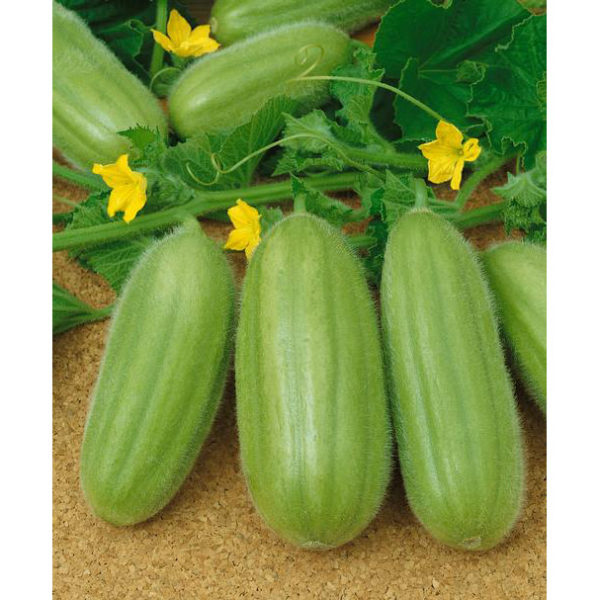
Italian breeders have created a unique vegetable that is similar to cucumber only in the early stages of ripening. In technical ripeness, the taste of a vegetable is cucumber. But when the product fully ripens, it acquires a melon taste and a tart fruity aroma. Outwardly, the fruits of Italian cucumbers resemble Armenian ones. They also have a soft green soft, slightly wrinkled skin.
Bee pollinating varieties "Abruzze" and "Barrese" are most famous in the world. The fruits of the Abruzze variety are enriched with many useful microelements, therefore it is recommended to use them for people suffering from immunodeficiency. Barrese is famous for fruits similar in appearance to melon. Ripe "green" is painted in rich yellow and orange shades. Their flesh is dense, crunchy and very sweet.
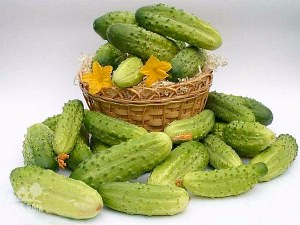 You may be interested in:
You may be interested in:Italian cucumbers begin to bear fruit in late July. The crop ripens in waves, so fresh cucumbers can be obtained for a long time.
Plants of Italian varieties of cucumbers are not very tall, and therefore they can not be tied. The care of the bushes is traditional - cucumbers like to “drink” a lot and eat nitrogen, potassium and phosphorus. At the time of fruit setting, it is important to feed plants with trace elements. Italians are best grown in greenhouse conditions, then it can be guaranteed that they will not get sick with anything and will give a plentiful harvest until mid-autumn.
Indian cucumber - half brother of zucchini
At home in India, this vegetable is called "momordica." The product belongs to the pumpkin family.
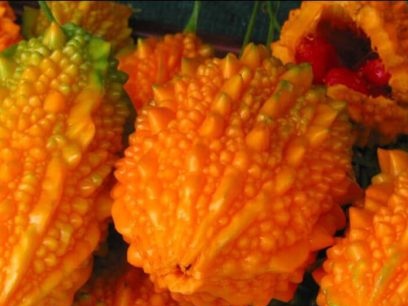
This exot is actively mastered by our compatriots. And not only gardeners, but also those who do not have a summer cottage. The fact is that the momordica plant is very miniature, and therefore it can be grown right in the pot. In India, momordica is compared to cucumber because of the refreshing taste of a vegetable, which can be a great addition to a multi-component dish. Outwardly, the fruits of momordica are completely unlike our Zelentsy. This is a large-bellied vegetable with narrow edges. The surface is completely covered with sharp tubercles of green color, which, with the ripening of the exotica, changes to bright orange. Burgundy large seeds are visible through the peel. The “prickly” characteristic of the cucumber was reflected in its name, which literally translates as “biting”.
During the ripening of the crop, it is better not to touch the fruits with bare hands, otherwise the sharp glandular hairs with which the fruits are covered can cause a burn on the skin. When the cucumbers are fully ripe, the hairs die off and are no longer dangerous. The pulp of the vegetable is dense, fleshy, bloody in color.
Indian cucumbers are characterized by long, tenacious lashes that look decorative along fences and hedges. Carved leaves are large, light green, smell of jasmine. The flowers of plants are bisexual, require pollination. However, due to the nature of the flowers blooming at night, the pollination process does not always go well. Therefore, summer residents most often have to pollinate them manually.
Serpentine Cucumber - Trihozant
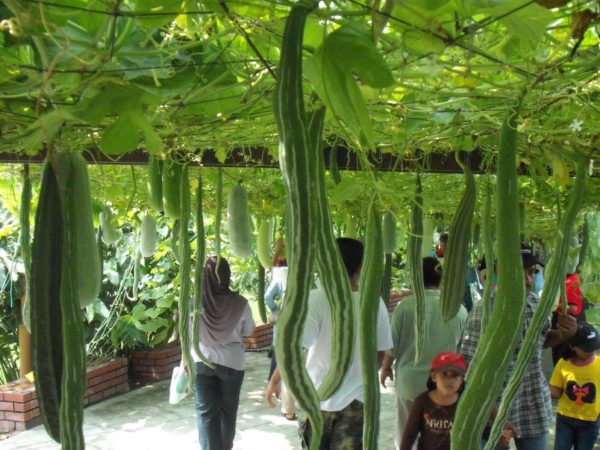
Another foreign guest arrived from Indonesia. There they call a trihosant a long, narrow, strongly curved "serpentine" vegetable (the fruit can reach one and a half meters), which, as it ripens, changes color from dark green to orange, and the ripe flesh acquires a bright red color. In India, Australia and Africa, it is customary to grow a trihosant as a vegetable crop and add to a variety of dishes. Its taste is slightly sweet, close to our cucumber. Trihozant is a universal vegetable. It can be canned, baked, fried, added to soups, side dishes and salads, made from it, lecho and caviar.
Asians consider the trihosant to be a healing product. Firstly, a mature product contains many vitamins, in particular iron. Secondly, a cucumber decoction works as an anesthetic and antipyretic.An antiseptic ointment is also prepared from leaves and fruits, which can be used to lubricate wounds and eczema. And nursing mothers take a trichosant to increase milk production and make it more fortified.
Liana-like plants. Their whips with the help of special suction cups located along the entire length of the stems tightly cling to any support. Fruits are formed at the ends of the stems and usually hang down, which facilitates their collection. To increase productivity, gardeners remove fruits from the bush when they are in a half-ripe state. In their place, a new fruit ovary immediately begins to form. Fruiting occurs in late June and lasts until the first frost.
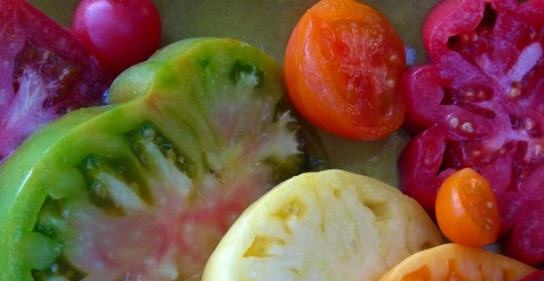 You may be interested in:
You may be interested in:Of the known varieties of serpentine cucumbers, Kukumerina, Petora Ular, serpentine, and Snack Guad gained great popularity. These are the most unpretentious and productive species that can be grown in greenhouses in the southern latitudes of Russia.
The dubious radiant is “red cucumber”
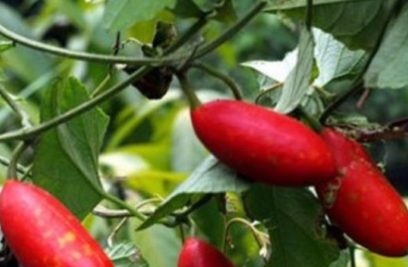
Perennial from Central Asia. The climbing vine covers all the surfaces that stand in her way. In the middle of summer, thick stems are covered with large tulip-shaped female flowers of bright yellow color. At the place of their flowering, fruits similar to cucumber are formed. At first they have a yellow color, but as they mature, they repaint in dark red. The skin is dense, slightly rough. The pulp is mushy, it is very sweet. Due to the high sugar content, the tladiant is not eaten as a vegetable, but as a dessert. Jam, syrups are cooked in their fruits, sweet cakes and cakes are baked.
It is extremely difficult to grow a full-fledged tladiant under the conditions of Russia, although it is known for certain that in the Russian Far East this vegetable grows only for decorative purposes. The fact is that the tladiant can be pollinated by insects, which simply do not exist in our country. Therefore, those brave people who decided to experiment, need to manually pollinate the flowers. In addition, female plants develop slowly and bloom late, which is why even if pollination has occurred and fruit ovaries have formed, cucumbers will not have time to ripen in short summer conditions.
Each shoot dies for the winter, and on the underground part several inedible tubers similar to potato ones are formed. In spring, a new shoot grows from each tuber, which also acquires its own tubers at the end of the season. This process lasts for decades, thus the liana can occupy vast territories. Liana grows very quickly - 8-10 centimeters per day. By the end of the tenth year of life, on one bed, a liana sharply reduces productivity, and it is transferred to a new place. Propagated by seeds or tubers.
Rough Melotria
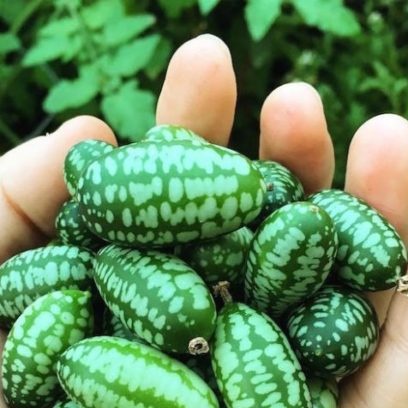
This vegetable belongs to the pumpkin family and also arrived in our country from hot Asia. Melotria fruits are somewhat reminiscent of familiar cucumbers, only they have very miniature sizes. Ripe vegetables are like eggs with a watermelon color. Only instead of the shell is a soft fleecy skin, and the yolk is replaced by a watery sweet consistency. The fruits of melotria are quite suitable for any type of processing. They can also be added to soups, side dishes and fresh salads.
Enthusiastic domestic gardeners successfully grow a perennial plant as an annual. You can get seedlings in a seed way. Melotria seeds are small, but they germinate fairly quickly and amicably. Seedlings are planted in soil at the end of May. And after two weeks you can safely try the first striped fruits.Mini-cucumbers will appear throughout the warm period. To get more fruits, gardeners recommend planting a vine on the sunniest spot, watering it every four days and weekly feeding bushes with organic and minerals.
The only thing that can cause problems during the cultivation of exotics is with a lush vine. If it is not cut, then it can grow up to three meters and envelop its tenacious stems with a fence, columns and even the walls of the house. However, thanks to decorative carved leaves and beautiful yellow flowers, melotria is often used as a garden decor. The decorative appearance of a vine can be maintained for three consecutive seasons, dying only for the winter.
Lemon cucumber
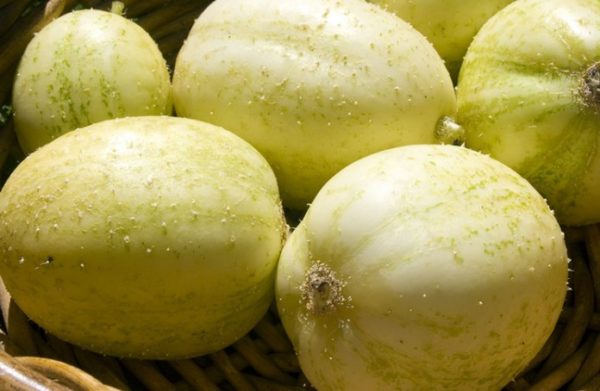
It is believed that this amazing vegetable originated in the province of India. The double name of the product is due to its characteristics: externally, the fruit resembles a lemon (color, shape, size), and to taste it is exactly similar to its Russian counterpart - slightly sweet, refreshing. The watery inside is dotted with not large white seeds - directly, as with an ordinary cucumber.
Unusual cucumbers are known not only in their homeland, but also in Europe and Russia. And breeders of England even decided to experiment, and by repeatedly crossing wild species received a variety called "Crystal Apple". This name was given to the hybrid due to the translucent flesh. This variety has taken root in European countries and is successfully cultivated.
Lemon cucumber plants are a huge thick lash up to 6 meters long. Sometimes it is called a cucumber tree. During the growing season, it is surrounded by many stems, on which round or ovoid cucumbers form. As they mature, their color is first light green, and then lemon yellow. Thin skin is covered with small soft fibers. The first wave of the crop ripens in mid-July. At this time, the tree is hung with a scattering of yellow “greenbacks”. New fruits are constantly appearing, and this continues until mid-October. During the season, with one liana, you can collect up to 10 kilograms of original cucumbers.
White cucumber
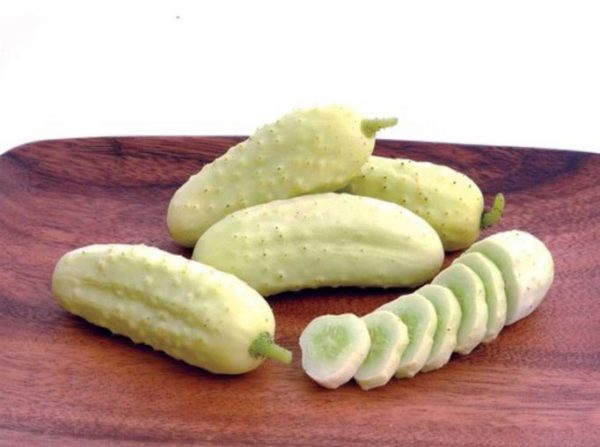
A white-skinned vegetable differs from its green counterpart only in the color of the skin. By all other characteristics, this is still the same vegetable that we are all used to growing in our gardens.
White cucumbers are the result of painstaking selection. Scientists, removing green pigment, got an excellent product, which, as many claim, is much tastier than ordinary cucumber. Its taste is more vibrant, rich and refreshing. Bitterness is always absent in them.
The whips of the white "Zelentsy" grow to two meters and certainly need to be tied. Fruits are formed along the entire length of the vine. Moreover, their size on the stem does not affect the size of vegetables.
The obvious advantages of white varieties include the good tolerance of environmental changes. Pollination and fruit set invariably occurs both in the sun and at temperatures below 15 degrees.
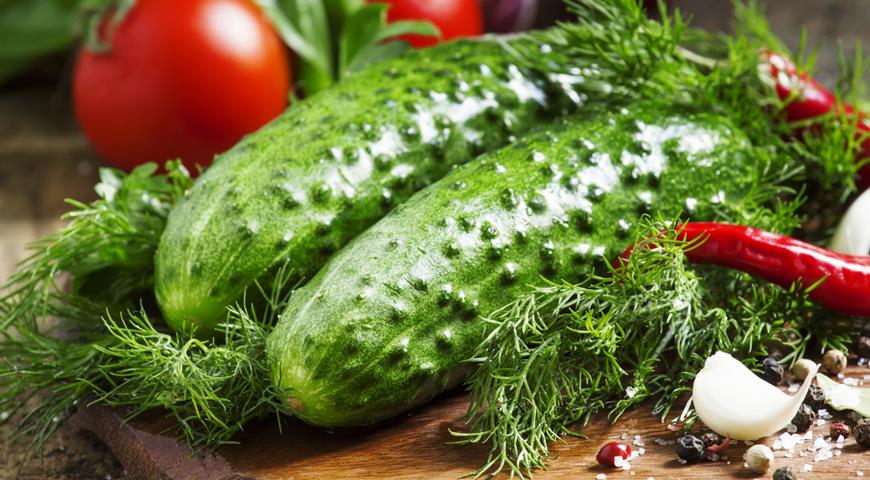 You may be interested in:
You may be interested in:The most famous varieties include:
- White angel.
- Snow Leopard.
- Snow White.
- Bride.
- Bidigo Lungo.
Many exotic vegetables are quite successfully cultivated on Russian soil. Foreigners feel good in the conditions of a short summer and a small number of sunny days. And even if you don’t succeed in collecting a huge harvest of overseas product, you can still enjoy the unusual vegetable with interest.

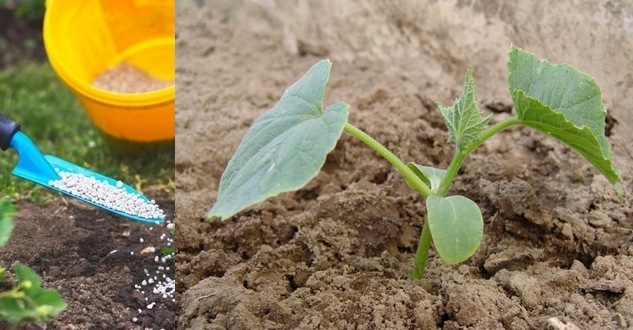
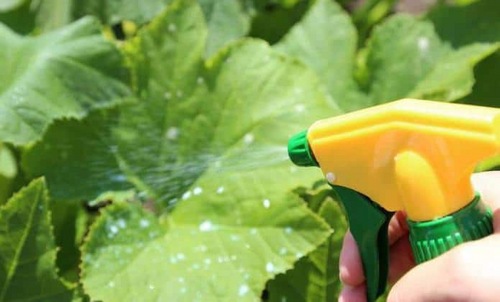
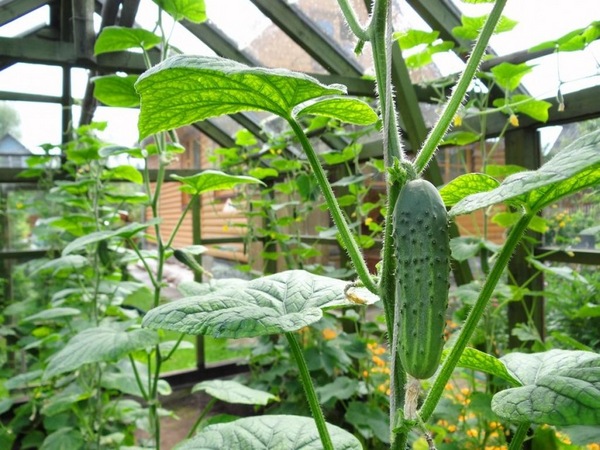
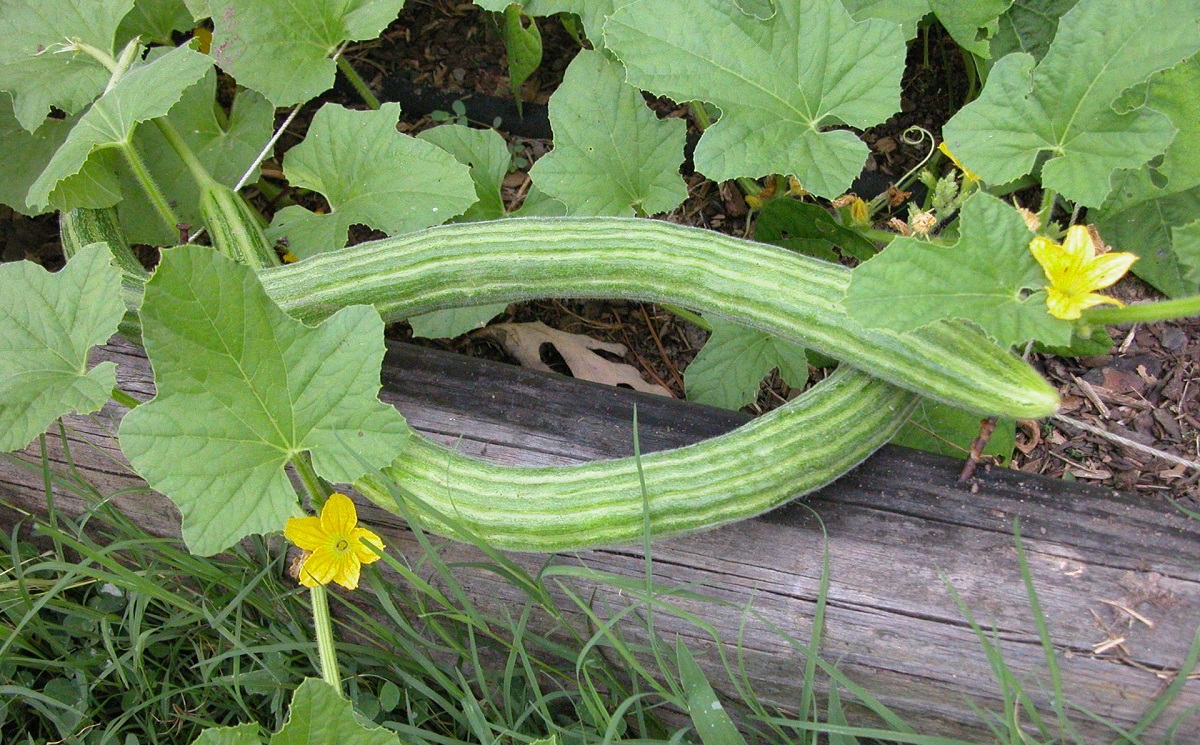 Armenian cucumber with melon flavor: description and characteristics, reviews
Armenian cucumber with melon flavor: description and characteristics, reviews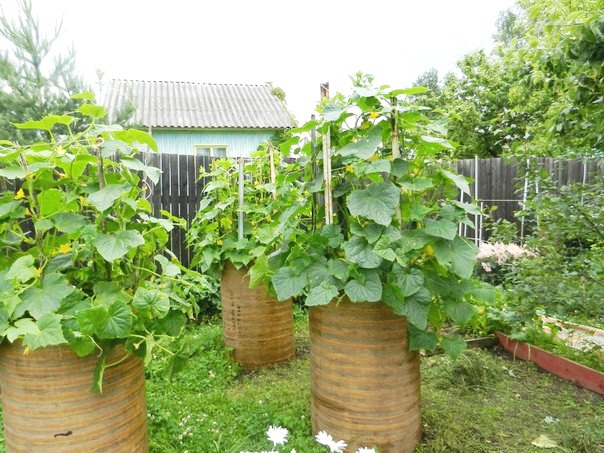 Do-it-yourself vertical beds for cucumbers: schemes, photos
Do-it-yourself vertical beds for cucumbers: schemes, photos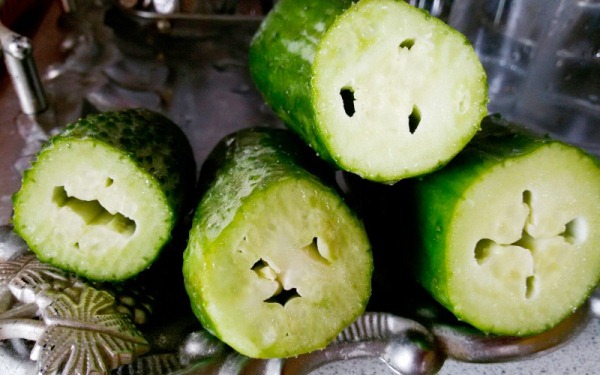 Hollow cucumbers: reasons for the appearance of hollow, what to do
Hollow cucumbers: reasons for the appearance of hollow, what to do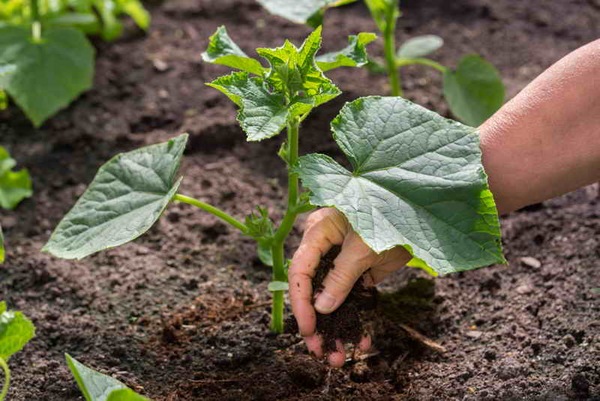 Which manure is best for cucumbers: application, how to breed
Which manure is best for cucumbers: application, how to breed